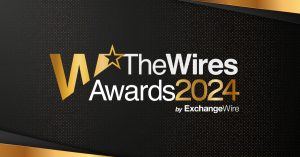What Next For Ad Tech’s Big Bang?
by on 20th Aug 2014 in News


Danny Hopwood, Vivaki, head of platform, EMEA, contemplates just how the ad tech sector will develop ahead of his ATS London appearance.
When I first encountered Invite Media in 2010, I was already late to the game. The ad tech explosion was well under way. Conversations in the industry centred on questions like: 'What DSP are you using?', 'Who has the best algorithm?' and 'What’s your QPS?'
DSPs used to be measured on their user interface (UI) enhancements, pacing options, optimisation boosters, universal tagging. These features and many more now exist in most DSPs, or will do. So whilst being valid questions, the notion of arguing over individual capabilities has become something of a commodity and a topic of conversation that while still relevant is not the sword you live and die by any more.
This is why when VivaKi first launched Audience On Demand (AOD), we decided very early on we were going to approach the market in a careful and tactical manner. We were not going to sign contracts with every DSP in the market.
We were not going to do countless head-to-head tests, and we were not going to split budget between DSPs. Instead, we decided to come to market with one DSP that although not perfect, would allow us to scale a business globally, roll out processes and instructions to meet advertiser’s expectations and give us the ability to be agile in a space that was constantly throwing new challenges.
That DSP ended up being Invite Media now known as DoubleClick Bid Manager.
The complete uproar this caused with many DSP vendors when we explained why we were operating this approach was, by the end of 2012, a common occurrence and a massive point of criticism for a long time.
We stayed true to our word and still only work with vendors that meet certain criteria within a process we have built internally known as VivaKi Verified. This is our guiding stick for technology, inventory and data decisions we make the world over on behalf of the clients we represent.
It’s not PowerPoint, a piece of excel or a person. It’s a team. A whole team of people whose job it is to understand this space, the supply and demand forces at work and how we do or don’t use them within a particular piece of technology.
It’s a process that takes three months or longer to complete, involving questions to the board of the technology company plus a 300+ point vetting process across areas including admin, analytics, audience and more.
It’s a process that has taught me a lot about this space and how to operate in it successfully. I think it’s also equipped me with a keen bullshit detector.
For example, there is a framework (no not IPONWEBS) that DSPs end up following whether they realise it or not. This results in the same capabilities appearing under different names in different DSPs.
This market is heavily interlinked. One request from a buyer to a tech vendor is another buyer’s old product that was built for them from their tech vendor months ago. The guises these solutions take depend on what catchy product name can be coined and PR’d.
Everyone is heading down the same path, hitting the same barriers and finding the same solutions. They just do it at different speeds. I can live without an optimisation booster as long as I have pacing options.
I can live with a bad UI as long as I can get a solid API or FTP to my internal platforms. For every function that is new, there is a function that exists that can bide a company over until they get the new one.
I may sound pessimistic, but trust me when I say I wouldn’t have this space any other way. I thrive off the creativity (and yes it does exist in programmatic).
The creativity, the development, the growth we have seen in EMEA and globally within programmatic can no longer be ignored and is a core component in every digital media plan these days but I won’t be wasting any more time telling you how important programmatic is. I don’t need to any more.
I think it’s fantastic we are getting to a point where technology companies are nailing product requests and the building of features. The difficult question is how do you create something that is outside of the standard paths that all technology vendors are slowly taking?
We only got here because of the creativity the industry naturally displayed. But as with any “big bang” the echo slowly but surely fades away. In the programmatic industry this fading echo can be characterised as the consolidation of technology. A notion I am sure everyone is familiar with and an area Ciaran briefly touch on in a previous post.
Over the many meetings I’ve had with technology vendors I think I might have found the two to three elements that a DSP needs to say to me to pique my interest.
Exclusive data, exclusive inventory and exclusive technology and it is these three elements that are slowly but surely coagulating around us in some of the biggest technology companies that we interface with every day.
In the Part 2 I will expand on these elements, explain why we are likely to see significant consolidation and some scenarios that could play out in the coming years.
Ad NetworkAd ServerAdvertiserTrading








Follow ExchangeWire